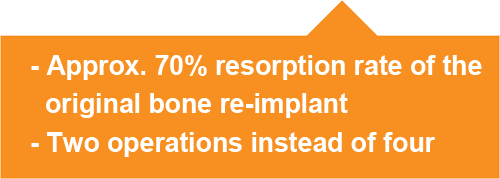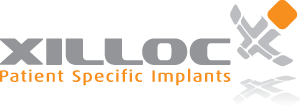Marc is happy again now he has his custom cranial plate

Imagine…
…having suffered for six years and knowing it could have been less than one
This happened to Marc Jacob.
A significant impact
Too many surgeries
 In November 2004, the neurosurgeons reimplanted the original bone parts removed during the first surgery, a standard procedure. However, one and a half year later, one of these reimplanted bone parts failed and was completely resorbed. This resulted in major deformations on the right side of his face and skull. In April 2006, the right side of his skull was reconstructed using bone cement. In April 2008, the second bone part resorbed as well, leaving the left side of his face and skull deformed.
In November 2004, the neurosurgeons reimplanted the original bone parts removed during the first surgery, a standard procedure. However, one and a half year later, one of these reimplanted bone parts failed and was completely resorbed. This resulted in major deformations on the right side of his face and skull. In April 2006, the right side of his skull was reconstructed using bone cement. In April 2008, the second bone part resorbed as well, leaving the left side of his face and skull deformed.
Happy end
In April 2010, he finally received a patient-specific implant to correct this deformation.The standard procedure described above should be replaced with a patient-specific implant treatment. In Marc’s case, this would have meant two operations less. Marc is convinced that all future cases should use a patient-specific implant to lessen the major impact on patients’ private lives. Thanks to Xilloc and the Department of CranioMaxilloFacial Surgery at Maastricht University Medical Centre, Marc was able to get his tailor-made implant. He can now live his life again as we all do!
* Patient-Specific Implant surgery performed by Prof. Dr. Dr. Kessler

